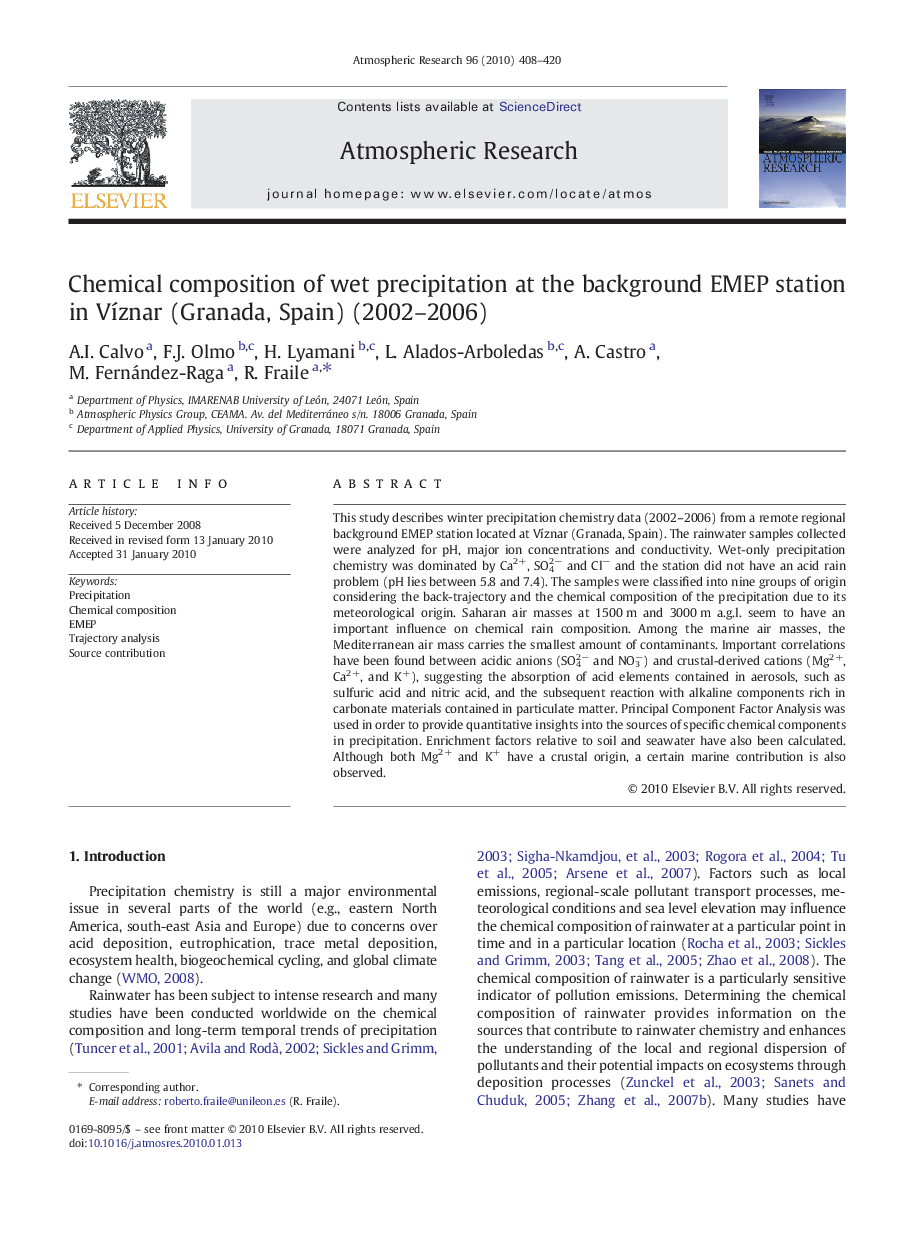| Article ID | Journal | Published Year | Pages | File Type |
|---|---|---|---|---|
| 4450688 | Atmospheric Research | 2010 | 13 Pages |
This study describes winter precipitation chemistry data (2002–2006) from a remote regional background EMEP station located at Víznar (Granada, Spain). The rainwater samples collected were analyzed for pH, major ion concentrations and conductivity. Wet-only precipitation chemistry was dominated by Ca2+, SO42− and Cl− and the station did not have an acid rain problem (pH lies between 5.8 and 7.4). The samples were classified into nine groups of origin considering the back-trajectory and the chemical composition of the precipitation due to its meteorological origin. Saharan air masses at 1500 m and 3000 m a.g.l. seem to have an important influence on chemical rain composition. Among the marine air masses, the Mediterranean air mass carries the smallest amount of contaminants. Important correlations have been found between acidic anions (SO42− and NO3−) and crustal-derived cations (Mg2+, Ca2+, and K+), suggesting the absorption of acid elements contained in aerosols, such as sulfuric acid and nitric acid, and the subsequent reaction with alkaline components rich in carbonate materials contained in particulate matter. Principal Component Factor Analysis was used in order to provide quantitative insights into the sources of specific chemical components in precipitation. Enrichment factors relative to soil and seawater have also been calculated. Although both Mg2+ and K+ have a crustal origin, a certain marine contribution is also observed.
